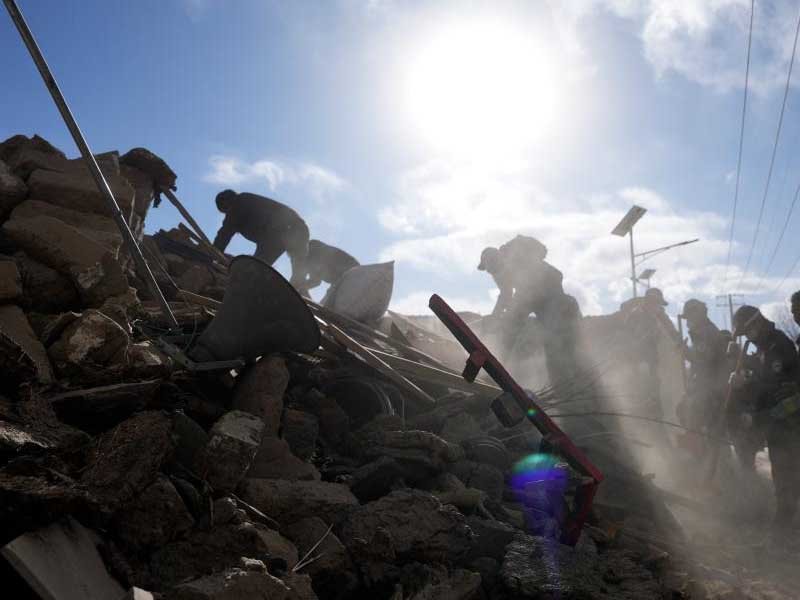- A 7.1-magnitude earthquake struck near Shigatse, Tibet, on January 7, 2025.
- At least 126 people are confirmed dead, and 188 have sustained injuries.
- Over 3,600 homes have collapsed, leaving thousands homeless in freezing conditions.
- Rescue operations continue with 3,400 personnel and significant government resources deployed.
- Tremors were felt in Nepal, India, Bhutan, and Bangladesh, causing fear but limited damage.
A massive 7.1-magnitude earthquake shook China’s Tibet Autonomous Region on January 7, 2025, leading to severe casualties and destruction. The quake’s epicenter was located in Tingri County, approximately 80 kilometers from Mount Everest and close to Shigatse, a culturally significant city in Tibet. The tremor struck at 9:05 a.m. local time (0105 GMT), leveling buildings and displacing thousands in freezing winter conditions.
Official reports confirm 126 fatalities and 188 injuries caused by the earthquake. The destruction was particularly severe in Tingri, Lhatse, and Sa’gya counties, where over 3,600 homes were reduced to rubble. Thousands are now without shelter as temperatures dip to -16°C at night, compounding the challenges for the affected communities.
Footage from the affected regions reveals collapsed structures and debris-strewn streets. Emergency services are actively searching for survivors amid concerns over continued aftershocks. Over 150 aftershocks have been reported, with the strongest reaching magnitudes of 4.4, leaving residents fearful and anxious about additional tremors.
Rescue Operations
In response to the disaster, the Chinese government deployed over 3,400 rescue workers, including 340 medical personnel, to assist the affected areas. President Xi Jinping ordered “all-out rescue efforts” to save lives and provide immediate relief. The government allocated 100 million yuan ($13.6 million) for disaster relief.
Essential supplies such as tents, quilts, and warm clothing have been distributed to survivors. Rescuers are working tirelessly to clear debris and provide medical care to the injured. The Western Theater Command of the People’s Liberation Army is aiding in relief operations, while satellite technology is being used to assess damage and coordinate efforts effectively.
Regional Impact
Tremors from the earthquake were felt across Nepal, India, Bhutan, and Bangladesh, triggering panic but causing limited damage outside Tibet.
In Nepal, residents in Kathmandu experienced strong shaking, prompting evacuations. Thirteen people suffered injuries, and several buildings sustained damage. In Bhutan’s capital, Thimphu, and India’s Bihar state, people reported feeling the tremors, but no casualties or major damage were recorded.
Ongoing Concerns and Next Steps
As aftershocks continue to rattle the region, the need for shelter, food, and medical assistance remains urgent. Authorities are working to restore disrupted communication and transportation networks to expedite relief efforts.
The Mount Qomolangma scenic area, near the quake’s epicenter, has been temporarily closed. Visitors were evacuated as a precautionary measure to ensure safety. Meanwhile, international aid organizations and neighboring countries have extended support, offering assistance to the Chinese government in managing this crisis.
The disaster highlights the vulnerability of the Himalayan region to seismic activity and underscores the importance of disaster preparedness and infrastructure resilience. As rescue efforts continue, the focus will eventually shift to rebuilding and ensuring long-term safety for communities in this high-risk region.


